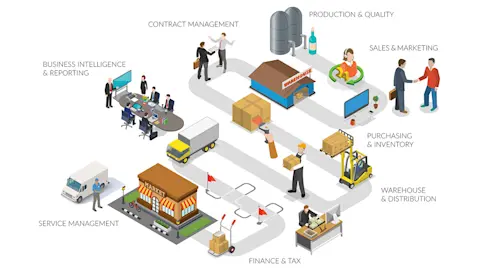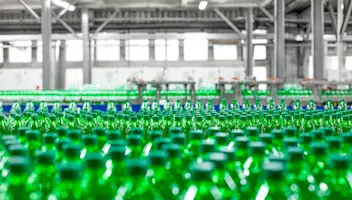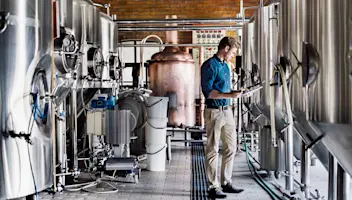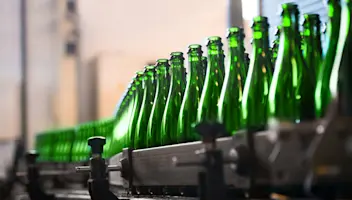Featured in this post
Want Growth in Your Beverage Business? Here Are 3 Key Focus Operational Areas
Want Growth in Your Beverage Business? Here Are 3 Key Focus Operational Areas
28 Oct 2021
Aptean Staff Writer
Having the right fully integrated business management solution means greater efficiency and profitability for your beverage business and provides the scalable platform on which to manage, grow and expand your business.
Below are three key operational areas—with the pertinent questions everyone should be asking—that you will inevitably need to focus on and improve, whether you are reviewing your existing processes and business systems or selecting a new beverage management solution.
1. Administration Efficiency
Is the system optimized and developed for the beverage industry? For example, when you process a transaction such as stock transfer or a sales order your system should automatically capture and post the relevant duty information so that the production of your HMRC reporting can be generated automatically and accurately at the end of each reporting period. Are your finance processes fully integrated with your purchasing, sales, production and distribution processes? Often beverage companies operate one system for finance and one or more systems to cater for their operational processes. This often causes issues and results in your finance team spending a significant proportion of their time duplicating data entry to both systems and then trying to reconcile differences between the systems rather than adding value to the financial management and control of your business within a fully integrated business management solution. Does the software have out-of-the-box, best practice functionality that helps you optimize your administration processes? Credit control management is a good example here. Your system must be able to automatically calculate the debt owed to you by each customer and provide you with a clear report on any outstanding debt before you process yet another expensive sales order to a customer with a poor payment record. Does the system allow you to calculate and manage your actual product costs? Think about your total direct costs of production, raw materials, duty et al as well as your indirect costs such as administration, storage and distribution overheads. Your solution should be able to automatically capture and allocate these costs to provide you with a true picture of your product profitability and avoid the danger of any hidden costs.
2. Production Control
Are you still managing your production planning on spreadsheets or whiteboards? Your business management solution should allow you to optimize your production plan by producing a demand forecast that in turn will calculate a Master Production Schedule from which individual production orders can be created, controlled and updated efficiently and flexibly to accommodate those last minute changes to plans.
Are you struggling to cope with demand compared with your capacity? This seems to be a very common theme throughout the industry and the fitting in of new fermenting vessels and conditioning tanks into small spaces has become something of an art form. A production planning system with effective capacity planning functionality will allow you to optimize the usage of your vessel capacity throughout the production process and maximize your production output. Do you ever run out of raw materials that you thought you had in stock which then causes a delay in production? This could be anything from raw materials to bottle labels. Having an efficient Materials Requirements Planning (MRP) solution is vital to make sure that you always have enough (but not too much) stock on hand to meet your production requirements. Your solution should be able to calculate the usage of stocks automatically in the production process and propose purchase orders for new stock based on actual consumption, seasonality and re-order levels. How do you manage your recipes? Is this currently done offline, in a spreadsheet? Again, this should be controlled in your solution using a Bill of Materials (BOM) to manage the raw materials used in the various stages of the production as well as the packaging materials required to produce your finished goods. This not only ensures consistency in the production, but also captures the associated financial information to allow for accurate product costing.
3. Tracking and Traceability
How many of your own casks or kegs do you lose in a year? Are you able to track a cask through your production process, sales order and delivery to the end customer and its return back? Your business management solution should allow you to manage and control this process at a level that matches your business needs. This may be at a basic level using manual controls and simply tracking the physical number of casks going out to each customer and matching them against the quantity returned. Alternatively, this may be controlled at a fully automated, detailed level using scanning and mobile devices to track a specific cask at all stages of the process: goods receipt, production filling, inventory management, sales order fulfilment, customer delivery with signed proof of delivery, returns order, and then back to goods receipt and inventory. What is your penalty policy for unreturned containers? Charging a deposit for kegs and returnable bottles is commonplace in many countries, but in the UK the default and accepted business practice throughout the industry is not to charge a deposit. So, how are you going to tackle one of your top customers who owes you 20 casks?
Are you going to refuse to deliver any more products until they return the empty casks?
Are you going to charge them a deposit on the casks until they return them?
Are you just going to ignore the problem and hope that the casks turn up in future?
Consider if you got a grip on your cask fleet and reduced your cask losses, how much would this save you over a year?
Answering some of these questions may help you determine the level of cask tracking sophistication you really need for your business.
Is there a correlation between tracking returnables and product traceability? Tracking is not just about the casks, more importantly, it is about product traceability. Are you able to trace the lot or batch of hops that you used in a specific production order to produce a specific finished product that was delivered to a specific customer on a specific sales order? The business management solution for your beverage business should not only be able to provide you with full product traceability from raw material to the end customer, but should also provide full reverse traceability from the end customer right back to the original raw materials used—we call this full bidirectional visibility.
Do your current business systems provide your beverage company with the functionality and controls to optimize your administrative, production and traceability processes? If not, then it’s time to start looking for a new beverage management solution. Many forward-thinking beverage companies implement a modern solution purpose-built specifically for the beverage industry like Aptean Beverage ERP.
It’s also worth highlighting that our ERP software for the food and beverage market was recognized by independent consulting firm Frost and Sullivan with the 2022 Product Leadership in North American ERP Software for the Food and Beverage Industry. That demonstrates the quality, reliability and performance of our system are a cut above.
Finally, consider the advantage of trusting a single provider for all of your beverage software needs—systems like PLM, OEE, EAM and BI to name a few—we strive to provide a cohesive experience across our full solution suite and can help accelerate your digital transformation with our wealth of experience in the food and beverage sector.
Ready to learn more about Aptean's solutions for beverage management and the rest of the software in our suite? Contact us today, or request a personalized demo.
Related Content


Ready to improve your beverage manufacturing business?
Aptean’s beverage ERP brings simplicity to a complex industry.






